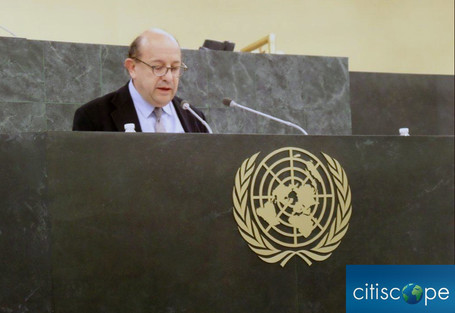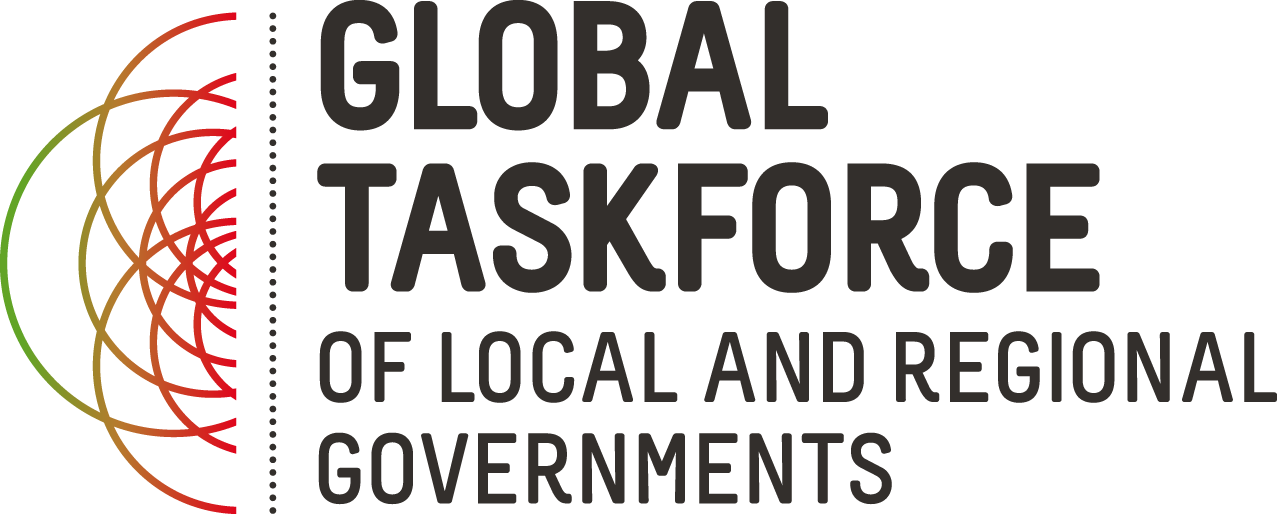
The UN's Open Working Group on Sustainable Development Goals convened in January 2013. Some 18 months later, it approved a set of 17 development goals for the world's people, including a goal explicitly related to cities. (UN Photo/Eskinder Debebe)
UCLG and its members are advocating for Sustainable Development Goals (SDGs) that take local and regional priorities into account, in particular in the light of the rapid urbanization faced by many regions of the world. The Campaign for an Urban SDG was launched because the dynamism of cities represents a major sustainable development opportunity, and a dedicated and stand-alone urban SDG is essential to mobilize stakeholders, promote integrated, city-level approaches, and accelerate progress towards sustainable development.
Josep Roig, UCLG Secretary General, puts it this way: “I look at the main goals — to end poverty and hunger, provide quality education, provide water and sanitation for all, build resilient infrastructure, provide economic growth and more — and then I ask: Where will all that be decided and take place? And suddenly it’s clear: It will be at the local, the city level across the world.”
After weeks of hard negotiations, the UN Open Working Group (OWG) on Sustainable Development Goals finally concluded its thirteenth and final session in New York on 19th July 2014. If the city goal makes it through to final ratification in September 2015, it will mark the UN’s strongest expression ever of the critical role of cities in the world’s future.
By Neil Pierce, Founder and Editor-in-chief of Citiscope.
Has an “age of the city” arrived — an era in which cities not only make up a majority of the world’s population, but in which their prosperity and security, their central role in the human enterprise is recognized, even by their nation states?
A global coalition of advocates for the urban cause believe they’re on the brink of a major breakthrough with a United Nations goal focused on the global urban future, included in the successor to the widely-publicized Millennium Development Goals (MDGs) of the past 15 years.
The eight goals of the MDGs are generally credited with getting national governments, NGOs and aid organizations on the same page about issues to focus their development work on. Worldwide, the MDGs have been credited with contributing to meaningful drops in rates of extreme poverty, HIV infection and child mortality, among other improvements.
But the MDGs expire in 2015, sparking a broad international discussion about what should replace them. Next to come will be a set of Sustainable Development Goals (SDGs) for another 15 years. A high-level UN working group was created to sort through hundreds of ideas for goals.
Urban activists joined in the debate. And after an extensive campaign, they saw their efforts rewarded July 19 by inclusion of a specific urban goal — to “Make cities and human settlement inclusive, safe, resilient and sustainable.” The goal is backed up by specific targets, such as eliminating slum-like conditions, reducing urban sprawl and ensuring universal access to safe and sustainable urban transit. (See the full list of the new goals here.)
If the city goal makes it through to final ratification in September 2015, it will mark the UN’s strongest expression ever of the critical role of cities in the world’s future.
Approval didn’t come easily. Representatives from a number of countries — most clearly Great Britain, but also to some degree such countries as Croatia, Korea, the United States, Argentina, Canada, Israel, India, Pakistan, Bangladesh and Nepal — expressed some criticism. They argued cities were already covered within other goals on the list — for example, ending poverty and hunger. Some also feared an explicitly urban goal would imperil attention and international aid flows to rural areas.
Read the full article.
Related News:
- Behind the push for an “urban SDG”
- The “urban SDG”: an explainer
- Comparing the MDGs and the SDGs
- On the record: What supporters of an “urban SDG” are saying











